Last Updated on April 3, 2020 by Soumya
Have you heard of the Dwijing Festival in Bodoland Assam? Well, I hadn’t until last year. Then some of my blogger friends attended it and posted really beautiful pictures. The most interesting ones for me were from the art section of the festival. The Dwijing Festival was, in fact, an open-air museum of art. I got lucky this year when I was selected to be part of the Bodoland Ambassadors team and attend the festival in person.
The art installations at Dwijing totally floored me. Their close connection with life and most importantly our feelings, thoughts, and relationships with other human beings was inspiring. I connected with the art curator of the Dwijing Festival, Wahida Ahmed from Blurred Perimeters and spoke to her at length to understand more.

The Dwijing Festival in Bodoland was a riot of colors and art
Please note: This post may contain affiliate links which means I may earn a commission if you make a purchase by clicking a link on this post. This will be at no additional cost to you. Affiliate links help me keep this website up and running. Thanks for your support!
And here’s why the Dwijing Festival in Bodoland was a celebration of art and life for me.
The Dwijing Festival is set on the banks of River Aie by the Hagrama Bridge in Bodoland, Assam. One of the first things that you will notice as you cross the Hagrama Bridge to get here is the abundance of colors. There are colorful flags fluttering in every direction. Vibrant Dokhonas (the traditional Bodo costume) adorn their wearers. Brightly-hued balloons cover the horizon. Pink candyfloss and bright oranges pop out of nowhere.
Looking for more information on Bodo traditional costumes? Hop on to our post on The Culture and Lifestyle of Bodo People.
And somewhere in the middle of so much color is a resplendent collection of artwork by Wahida and her team from Blurred Perimeters. Local artists have also pitched in with their contributions. The result is a mindblowing ensemble of contemporary art greatly inspired by the culture of Bodoland. If you are an art lover, you would not want to miss it.
If you are an art lover, then you will also love reading through our posts on Sicilian Baroque art in Modica, Italy and Azulejo art in Porto, Portugal.
A little bit about the team from Blurred Perimeters
Wahida Ahmed is an artist from Sibsagar, Assam who conceived the idea of Blurred Perimeters in 2014. Wahida loves to call Blurred Perimeters a socio-cultural movement rather than a project. Through Blurred Perimeters, she creates art that helps erase all kinds of boundaries – of caste, creed, color, language, and geographies. And inspires people to see beyond differences. This thought is amply reflected at the art installations in Dwijing.
Wahida’s first project for the BTAD (Bodoland) was at the Dwijing Festival 2018-19. She was the obvious choice for Dwijing Festival 2019-20 and I am glad I got an opportunity to see her team’s work. This season, there were two other artists other than Wahida that worked at Dwijing. Pratul Dash from Odisha and Manish Pushkale from Madhya Pradesh.

Blurred Perimeters at Dwijing Festival 2019-2020
Inspirations behind the art at Dwijing Festival
Art by Blurred Perimeters is almost always inspired by the socio-cultural environment in which it is created. That includes the life of people in that area as well as economic and political conditions at a more macro level.
The people of Bodoland, their culture and ways of life greatly motivated the art creations at Dwijing Festival. You will see that many of these pieces were fabricated using locally-available raw materials such as jute, hay, thread, bamboo, and sand. Plus, they were inspired by local stories and traditional folklore. The role of River Aie in Bodoland, the gripping tale of a lady Zamindar, and the local art of silk weaving are just to name a few.
The collection at Dwijing 2019-20 was beyond impressive. And it was not only because of the external appearance. The amount of thought, research, and introspection that had gone into each and every piece was mind-boggling. Each and every piece conveyed a special message. And this made looking at the artwork even more worthwhile.
Some of my favorite art pieces from the Dwijing Festival 2019-20.
Let my land bloom by Wahida Ahmed

Let my land bloom ensemble at Dwijing Festival 2019-2020
One of the most impressive installations at the festival was a collection of flowers in a gurgling stream of water. They were crafted by Wahida herself. Made up of colored fabric and bamboo, these flower petals stood out against the shiny sands of River Aie. And seemed to convey a unanimous message. The message of peace. No discrimination. Accepting people the way they were. Letting the country bloom with all its diversity.
This was one of my favorite art pieces at Dwijing. It somehow resonated with my feelings at that point in time. It seemed to be just the perfect way out of the political conundrum that had gripped India then. And still keeps gripping the country. Even now!
Thengphakri by Wahida Ahmed

Thengphakri by Wahida Ahmed at Dwijing Festival 2019-2020
Wahida’s Thengphakri was another awe-inspiring artwork at the Dwijing Festival 2019-2020. After talking to Wahida, I found out that she had spent more than two weeks with the people of Bodoland in order to research and understand the legendary tale of the Bodo heroine Thengphakri.
Lore has it that Thengphakri was an extremely courageous woman from the British era. There are theories that she was a Tehsildar and went around collecting taxes from farmers. However, when the need arose she wielded a sword to protect her own people. Some believe she was a widow who fought against female oppression and social hypocrisies.
Thengphakri was the embodiment of courage for the Bodos and is worshipped as a deity even today. Through the art installation at the festival, Bodoland pays tribute to their lost heroine and a fighter. And Wahida tries to reflect the conflict between myth and reality. It is strange how both can play an equally important role in human life. She used thread, bamboo, and tonnes of creativity to design Thengpakhri. And it is a must-visit art piece at the Dwijing Festival.
Bima Dei by Manish Pushkale

Bima Dei by Manish Pushkale at Dwijing Festival 2019-2020
Another intriguing artwork at the Dwijing Festival is the Bima Dei by Manish Pushkale. It is a wall made of bamboo. This installation conveys the nondiscriminatory nature of a river.
A river embraces both its banks and considers them to be the same. Similarly, Bima Dei represents a wall/boundary/border in the human world where both sides are the same. There’s also a small window in the wall where you can peep into the world on the other side. When you do that, you realize it is all the same.
Hut Huti by Pratul Dash

Fish-shaped Hut Huti by Pratul Dash at Dwijing Festival 2019-2020. Source: Pratul Dash
The Hut Huti was an engaging structure created by artist Pratul Dash. Hut Huti refers to a river in Assam that has become extinct now. At one point in time, River Hut Huti, River Aie, and River Nangal Bhanga merged together in Chirang Bodoland to create the most unique ecosystem in the state.
A major component of this ecosystem was fish. Local life revolved around fishing. Pratul Dash conveys this relationship by creating a giant (80 feet by 30 feet) fish-shaped structure called Hut Huti. He used locally-sourced bamboo and inexpensive fabric to bring Hut Huti to life. I could walk inside the fish body. And feel the warmth of the shelter it provided me with!
Serki by Wahida Ahmed

Silk thread on bamboo resembling Buddhist spinning prayer wheels at Dwijing Festival 2019-2020
The last of my favorites was an innovative display of the art of weaving. It was called the Serki. Silk threads were wrapped around bamboo sticks shaped into bells. More than 15 such pieces stood in a line. The ensemble resembled a set of spinning prayer wheels in Buddhist monasteries. I span the wheels of bamboo and silk. And simultaneously marveled at the ingenuity of the artist who had fused local life and spirituality together so well.
Other art pieces
Apart from the team of Blurred Perimeters, various other local artists also contributed to the Dwijing Festival. A number of artworks were scattered all over the place. In fact, the whole place was filled with art and colors. Even the tents had special designs weaved into them. I especially loved this rotating tree with colorful leaves on it.

The colorful spinning tree at Dwijing Festival 2019-2020
The Dwijing Festival in Bodoland Assam is every art lover’s paradise. If you are a big fan of art, culture, and local life and haven’t been to the Dwijing Festival yet, then you are definitely missing out on something.
Here’s some practical information on how to view art at the Dwijing Festival.
When and where does Dwijing Festival happen?
Dwijing Festival begins every year at the end of December and continues until the first week of January. It is held on the banks of River Aie in Bongaigaon, Bodoland – an autonomous region in Assam, India.
What is the best way to get to the Dwijing Festival?
The best way to get to the Dwijing Festival is to take a car/private taxi from Bongaigaon. It is a 20-minute drive from the city center. You can spend the entire day at the fair and ask your driver to pick you up later. Parking space is also available on the grounds.
Where to stay during the festival?
Since Bongaigaon is the easiest getaway for the festival, you can stay at Bongaigaon. There are a few nice hotels here.
- Hotel Himalaya – This is the one with the best reviews. Good food, clean rooms, and friendly staff. Click here to book your stay at Hotel Himalaya in Bongaigaon.
- Cygnett Park Meghna – This is the one we stayed in with our team of Bodoland Ambassadors. Nice property, good food, and clean facilities. However, I cannot say the same about the front desk staff. They weren’t really friendly or excited to help. If you are willing to overlook that, then you can book your stay at Cygnett Park Meghna here.
- For other hotels in Bongaigaon, click here.
The festival grounds also have a few basic and luxury tents that you can rent for a couple of days. If you do not wish to spend time traveling to and from Bongaigaon, then the tents are a good idea. They give you a closer look at the festival and the people. You can contact the management at Dwijing Festival to go ahead with the booking.

Even cottages and tents at the festival were gracefully crafted
How to get to the art section at the Dwijing Festival?
As you enter the main gate of the festival, keep walking until you see the sign I Love Dwijing. The art installations are in a huge space behind that sign. You will need to cross a small bamboo bridge to get there. First, you will come across creations by local artists. And then there is the section by Blurred Perimeters.
Are there any toilets nearby?
I did not spot any toilet in the art section. However, toilets are available at the reception office, VIP area, and behind the food stalls on the festival grounds.
How much time do you need to explore the art section?
You will need anywhere between an hour to an entire day to explore the art installations in Dwijing depending on your appetite for art. Once done with the art, there is a lot more to do at the Dwijing Festival. Indigenous food, local art and craft, joy rides, wrestling competitions, hot air balloon ride, and a cultural extravaganza of Assamese dances. You will have your hands full.
Also, make note of the fact that you will want to spend some time clicking pictures in the art area. Since the pieces are all very colorful and set against a plain backdrop, they make for great Instagram backgrounds. Go early in the morning or later in the day to get good pictures.

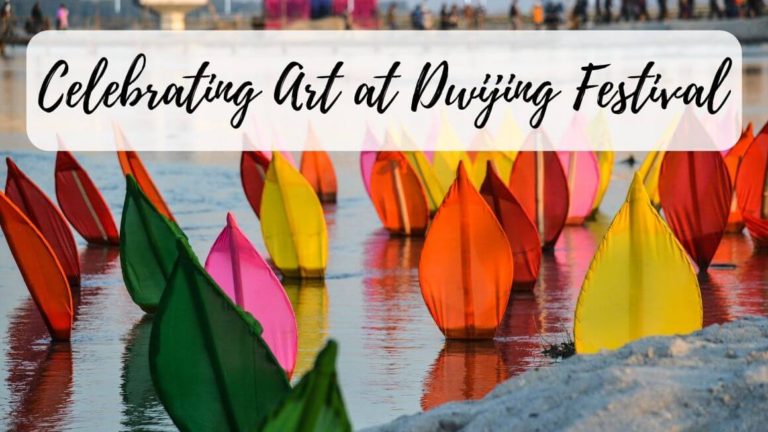
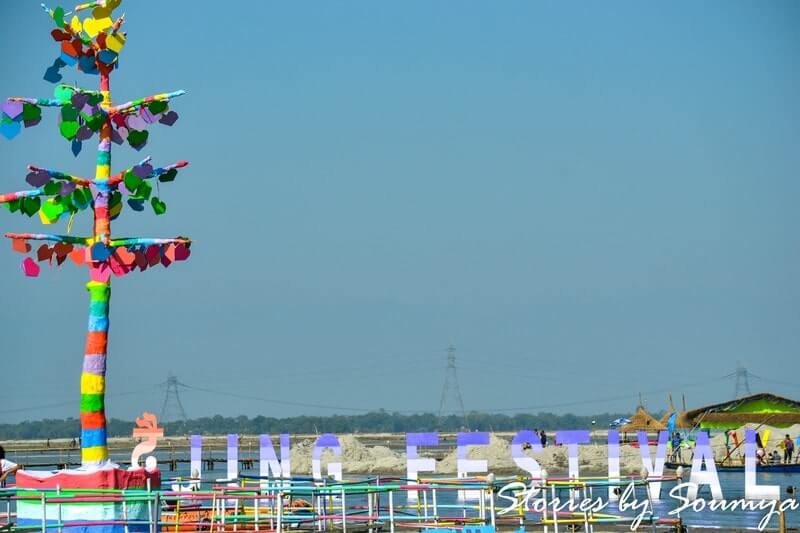
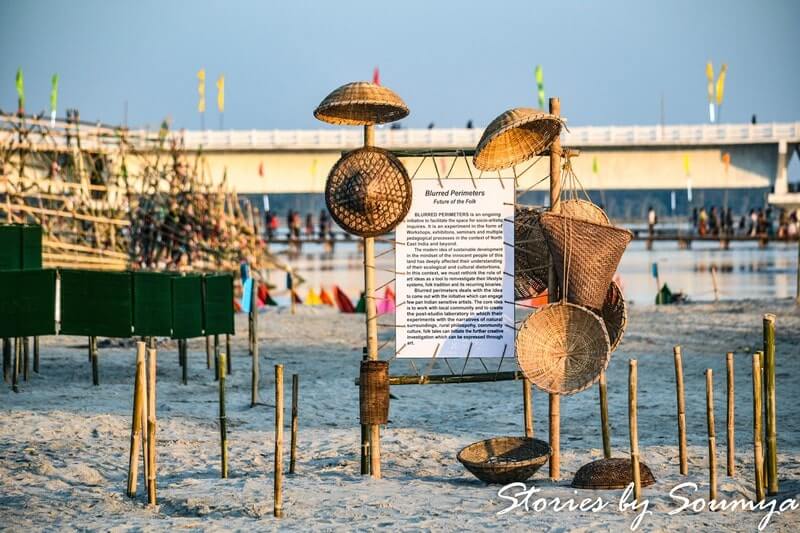
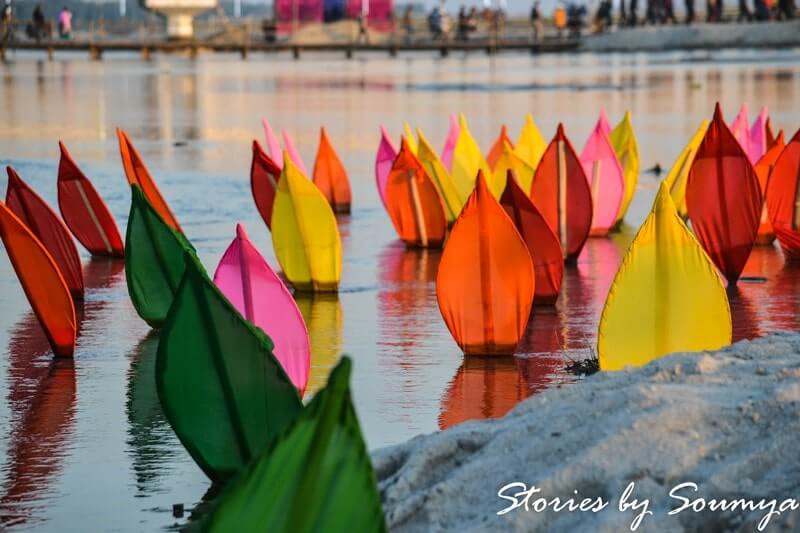

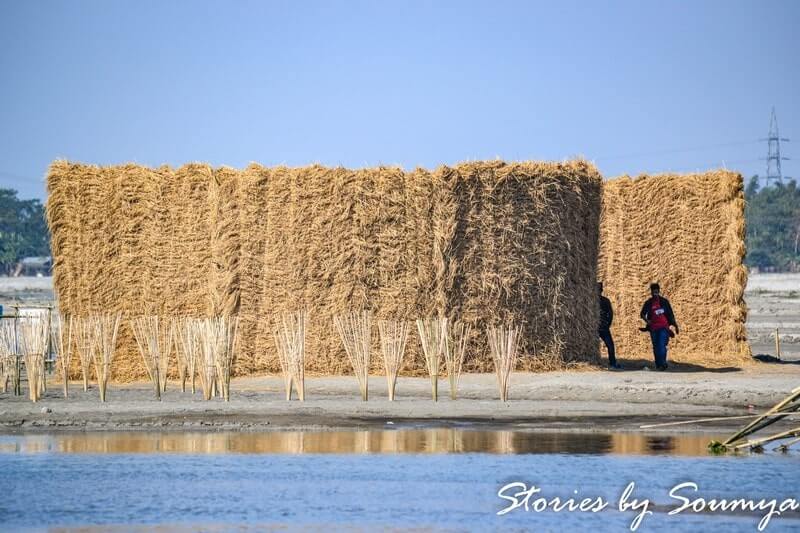
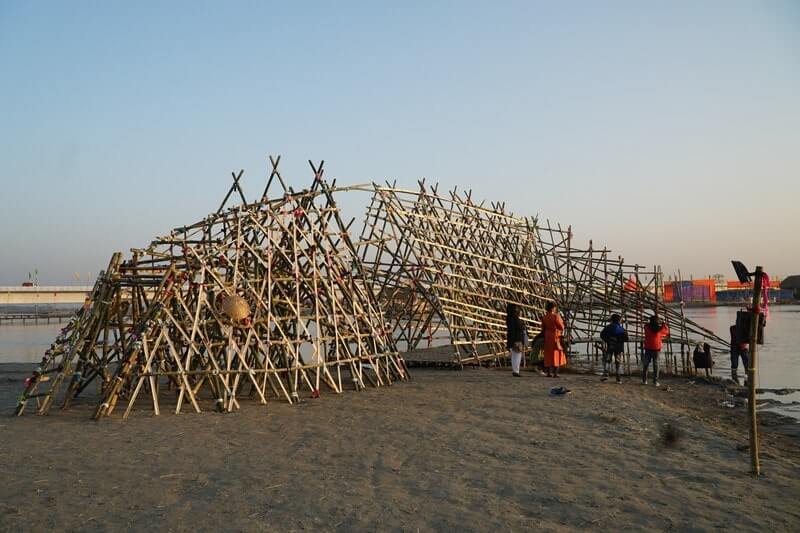
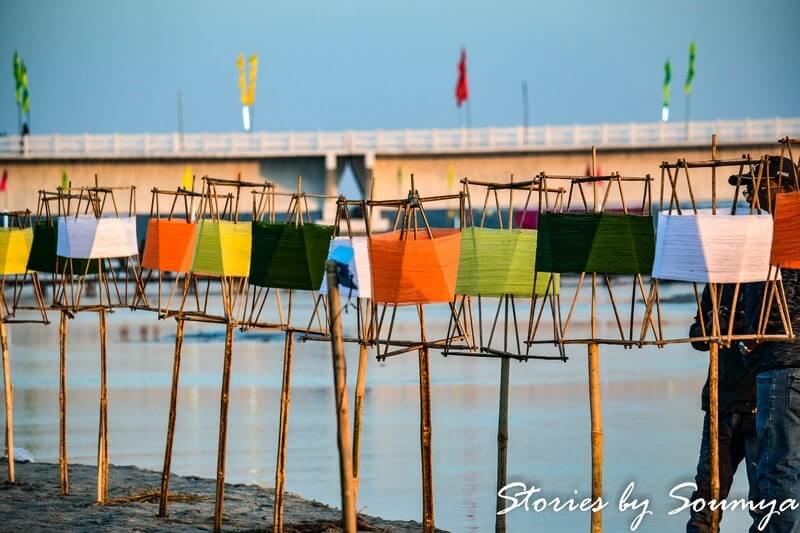
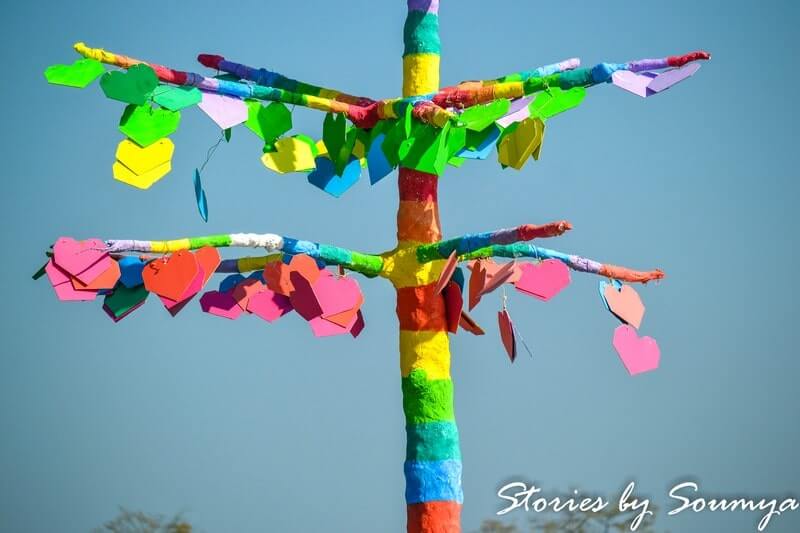
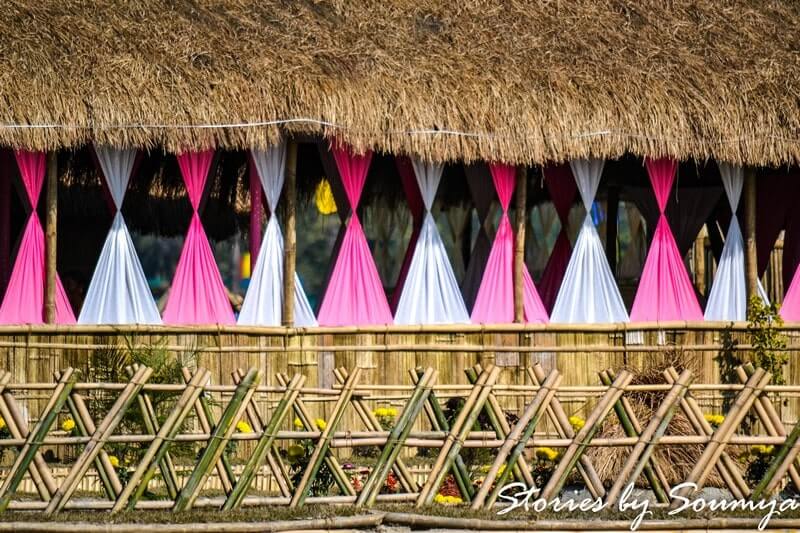
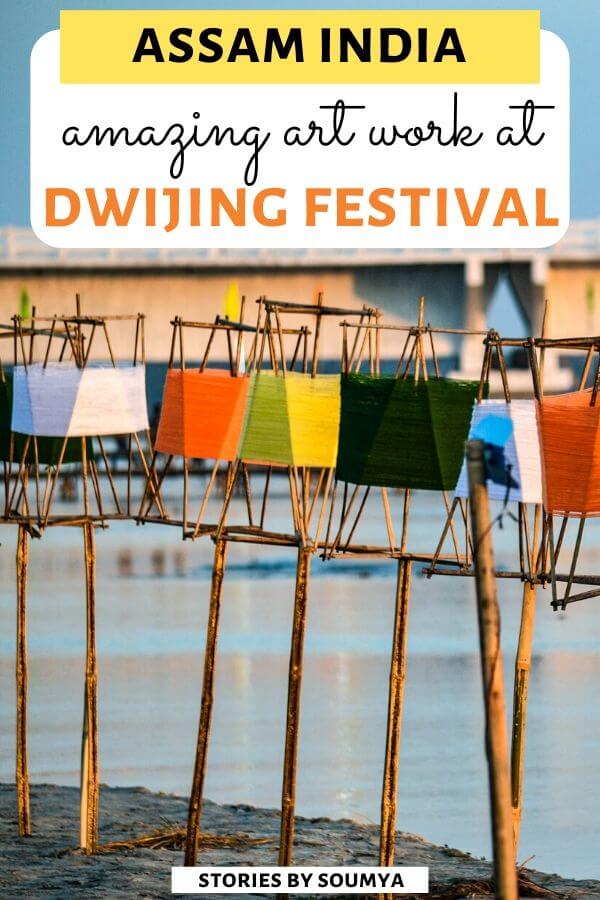
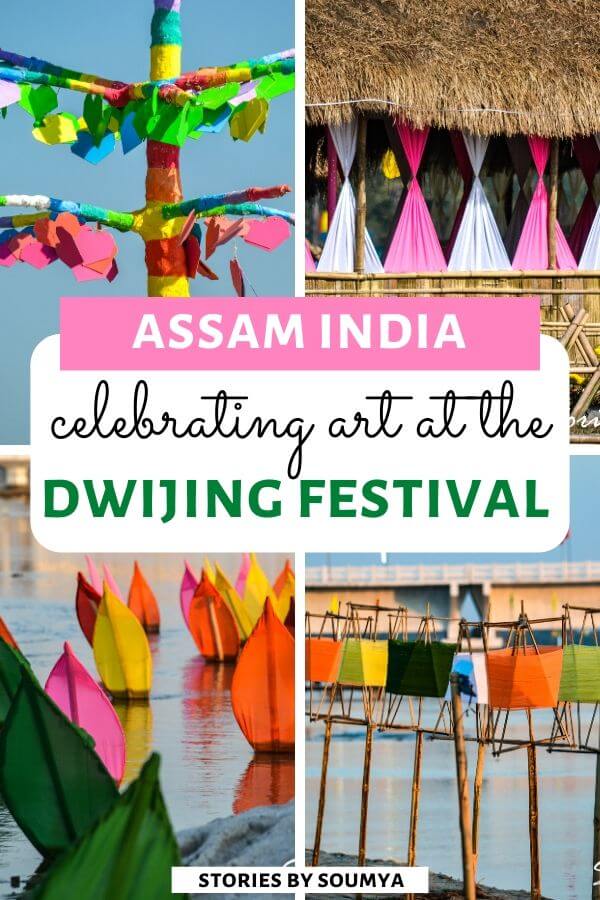
I am not aware of Bodoland region of Assam and therefore loved reading your post as I find many things new and unique in this. Spreading social message through art is always a great thing and therefore Blurred Perimeters which is a socio-cultural movement rather than a project has done commandable job here in this remote region. I would love to see how through art they have erased all kinds of boundaries – of caste, creed, color, language, and geographies. Seeing culture through art installations is always great and therefore Dwijing interests me.
With your background of art, you will be thrilled to explore the Dwijing Festival.
Never knew this side of Bodoland. This is just so thoughtful and so very vibrant! Loved the fact that you have not just clicked the installations but named the artists and discussed their viewpoints 🙂
Thanks Divyakshi. I was quite surprised too when I located these thoughtful art works at Dwijing. Could not help but research more on the team that created them.
Excellent information on the occasion when Bodo land accord is being celebrated at Kokrajhar.
True. Now Bodoland can look forward to growing and developing now.